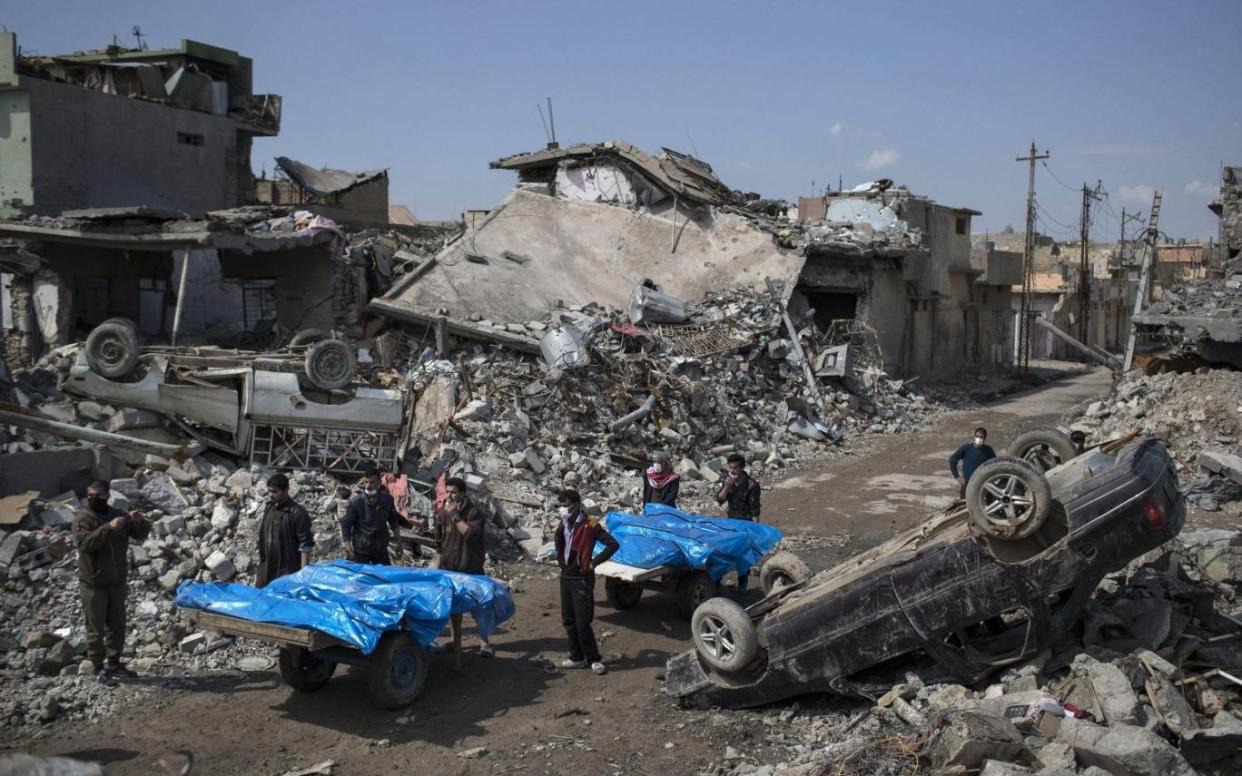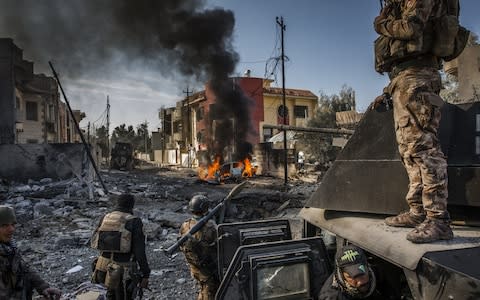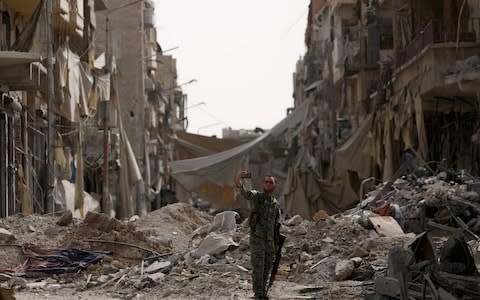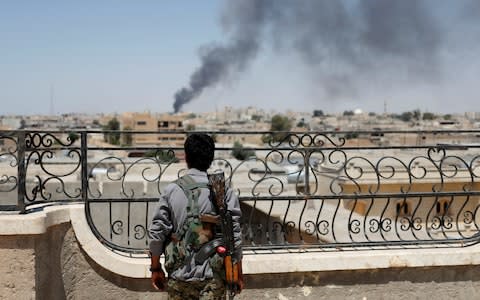US-led coalition responsible for civilian death toll 'not seen since Vietnam' in fight against Isil

The US-led coalition killed as many as 9,600 civilians in the battle against Isil, a death toll from Western military action “not seen since the Vietnam war”, a monitoring group has found.
The coalition is responsible for more than a third of the estimated 25,000 civilian deaths in Syria and Iraq since launching its offensive against the jihadists in 2014, according to a new report by UK-based Airwars.
Airwars found that its heavy use of explosive weapons unintentionally inflicted large numbers of casualties, despite the “precise” nature of many of those bombs.
The figure is 10 times higher than the one given by the coalition, leading experts to describe it as the least transparent military campaign in US history.
When discussing the battles against the Islamic State of Iraq and the Levant (Isil), the coalition described a target-selection process grounded in meticulously gathered intelligence.
But Airwars claims in its report that the size of ammunition used may have undermined key benefits of so-called smart bomb technologies. Deployed in densely-populated areas, they caused devastating effect.
In the most widely covered civilian casualty incident in the Iraqi city of Mosul a March 17, 2017, coalition air strike on homes in the Jadidia neighbourhood saw at least 105 civilians killed.

A 500lb delayed-fuse munition was dropped on a building in an attempt to target Isil snipers on the rooftop, however, families had been hiding in lower levels.
Isil routinely used civilians as human shields and was known to shoot any men, women or children who tried to flee. They proved a formidable enemy which cost Iraq the lives of thousands of its troops and militia fighters.
“The battle for Iraq’s second city was described by American officials as the most intense urban fighting involving their forces since World War Two,” the report, entitled Death in the City, said.
“The civilian toll, meanwhile, grew to levels not seen in decades. Reported non-combatant casualty rates from Western military actions, at both Mosul and Raqqa, reached levels last seen in Korea or Vietnam.”
However, the report said few of the lessons learned from Mosul would be applied in the coalition’s next urban assault on Raqqa, the capital of Isil’s “caliphate” in Syria.
The destruction in Raqqa, a much smaller and less populated city than Mosul, was even greater still.

There it was found the relatively poorly equipped fighters from the US-allied Syrian Democratic Forces militia relied much more heavily on both air and artillery strikes to aid their advances on the ground.
Airwars found the coalition was responsible for some 1,400 of the estimated 2,000 civilian casualties during the four-month offensive there.
The coalition has sought to downplay the number of civilian casualties, so far publicly admitting to only 883 - a fraction of those recorded by Airwars.
The UK, the second-biggest contributor to the coalition's offensive after the US and which carried out some 1,600 strikes, has admitted to just one.
Earlier this month the Ministry of Defence confirmed one of its Reaper drones fired on an Isil target in Syria and “unintentionally” hit a man on a motorbike as he crossed the target area.

The MoD has repeatedly said it does “everything possible" to minimise the risk to civilians and said that RAF crews used "rigorous targeting" procedures and use of "precision weapons".
But, Airwars said, there are “at least three more known civilian harm incidents in which UK aircraft are strongly implicated”.
Other members of the coalition, including France, Belgium, Denmark, Canada, Jordan, Saudi Arabia, UAE, Bahrain and Turkey all still claim perfect bombing records.
Airwars said that the coalition almost never conducts field investigations, instead relying heavily upon remote analysis.
They claim the coalition is much less likely to track and record “unobservable” civilian harm, such as in Jadida where people had been sheltering out of view.
“This inability of the coalition properly to model ‘unobservable’ civilian harm in urban fighting - even though this is likely how most non combatant deaths and injuries occur - is in the view of Airwars likely to be a key reason why the coalition continues significantly to undercount civilian harm,” the report said.

The number of civilian deaths by coalition forces is also likely to rise as bodies are pulled out of the rubble of the Old City of Mosul - the scene of the fiercest fighting in northern Iraq.
Some 700 bodies were recovered just last week alone.
During a visit last month by the Telegraph, body-collectors in the Old City said that since the offensive ended almost a year ago, nearly 2,000 bodies of Isil fighters and civilians had been retrieved.
Airwars also released statistics on Russia’s air campaign in support of the Syrian government.
They estimated Russia was responsible for the deaths of between 7,000 and 11,000 civilians, although noted that tracking the casualties was much more difficult because the Russians operate in the same air space as regime jets.
Compared to the coalition, Moscow, which intervened in the war on behalf of President Bashar al-Assad in 2015, has employed a far greater percentage of unguided “dumb” bombs, the group said.
Assessments of statements and open-source imagery released by the Russian ministry of defence suggest that perhaps five per cent of Russian munitions have been “smart” - versus approximately 95 per cent of coalition air released munitions.
The were also found to routinely hit civilian targets, including schools and hospitals.

 Yahoo News
Yahoo News 
